Me and my bike on ParisBudapestMetro

@Photo and interview by: Kulcsár Balázs
https://www.youtube.com/watch?v=w0JIj-2Ying
VIRTUÁLIS TÁRLAT – GYÓGYÍR
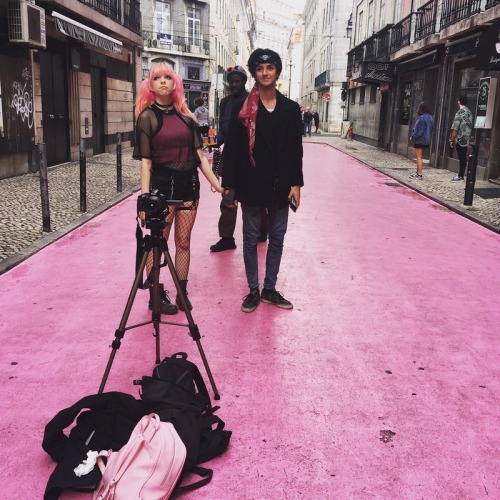
@Szász Lilla: #lisbonstreetfashion (2018-2020)
A Gyógyír című csoportos kiállítást a tavalyi évben nyitottuk volna meg, a járványügyi korlátozásoknak megfelelően azonban bizonytalan időre elhalasztottuk. Virtuális formában most betekintést nyújtunk a tárlatba, amely a Capa Központ újranyitását követően látható lesz.
„A huszonegyedik században az emberek lelki válságba kerülése globálisan érzékelhető problémává vált. Milyen apró lépések segíthetnek az egyéneknek a mentális egészség megőrzésében és melyek az elképzelhető megoldások a kisebb-nagyobb közösségek, illetve a társadalom számára a krízis, a szorongás, a kiégés problémáiból való gyógyuláshoz? Röviden megfogalmazva a kérdést: hogyan legyünk jól? És milyen szerepe lehet mindebben a fotónak? 2019 őszén nyolc alkotót kértem fel arra, hogy válaszokat keressünk és új, elsősorban a fotográfia médiumával létrehozott alkotásokon keresztül vizsgáljuk és mutassuk be a gyógyírt jelentő utakat, lehetőségeket napjainkban. A felkérést követően pár héttel egy világjárvány tette még inkább aktuálissá kérdéseinket és a lehetséges megoldási módokat. A Gyógyír című kiállítás a válságból való kiutak egyéni és társadalmi lehetőségeivel, a gyógyulás témakörével foglalkozik.” (Gellér Judit kurátor)
Kiállító alkotók: Bartha Máté, Csontó Lajos, Fátyol Viola, Gyenis Tibor, Hodosy Enikő, Szatmári Gergely, Szász Lilla, Szombat Éva
Arculat és grafikai munkák: Füredi Tamás
#secondaryarchive is online now
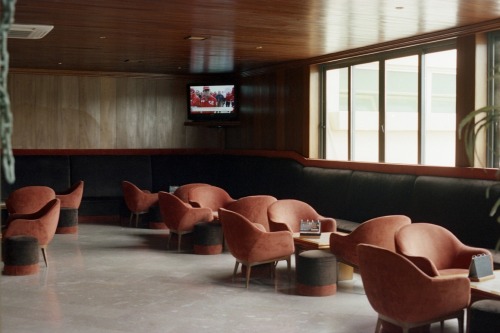
@Lilla Szász: Greetings from my new home (2018-2020)
Secondary Archive tells the history of non-Western — primarily Central and Eastern European — art through the lens of gender, covering the period after WWII through the present. This archive is composed of artistic statements and unknown pages of the biographies and practices of female artists, where one can see the names of those who have been marginalized, neglected, forgotten, or remain little known to the general public alongside artifacts from key female figures of non-Western art. The period covered by the archive embraces the artistic endeavors of three generations of women artists spanning from the 1960s onwards: from the first so-called neo-avant-garde generation that operated within the toughest period of communistic regime, with a mediatic turn through a conceptual approach; to the second generation, which emerged in the eighties and nineties, having witnessed the opening effects of the Fall of Communism in their early career; and the third generation who, having come of age at the time of political changes that have reshaped the face of present-day Europe
#SECONDARYARCHIVE
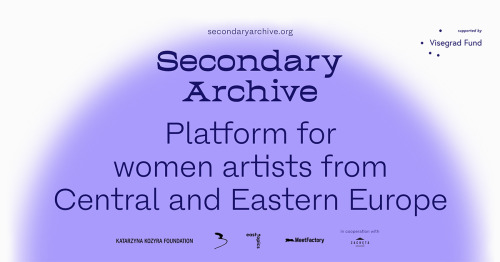
Join us on Friday April 9th at 11 AM, for the livestream inauguration of secondaryarchive.org – Platform for women artists from Central and Eastern Europe.
Over 250 artists, 40 curators and one platform that turns the spotlight on statements of women from Central and Eastern Europe. Secondaryarchive.org is a unique, international project, representing three generations of artists from Poland, the Czech Republic, Slovakia and Hungary. Its aim is to help promote, discover, and rediscover women artists and the most valuable phenomena of contemporary art of our region from the female perspective.
/secondaryarchive.org/
for more news follow #SecondaryArchive
EIGHT WEEKS: HUNGARIAN PHOTOGRAPHERS DURING THE PANDEMIC

@Lilla Szász, Mask Fashion (2020)
Eight Weeks
Eight weeks. This is how long we followed the activities of contemporary Hungarian photographers in the virtual space during the pandemic. The eight selections published on the Capa Center blog from week to week will appear in the physical space now in the form of a pop-up exhibition, commemorating the events of the past few months.
We all went through and reacted to the period of the COVID-19 pandemic in different ways, gaining a wide array of experience. The pandemic and its consequences have considerably impacted the lives of photographers as well. Yet, they continued doing what they do anyway: they took pictures. Of course, not exactly the same pictures and not exactly in the same way as before: some of them stayed at home and created a visual diary of the lockdown, while others would still go out on the streets to record the changed living conditions and cityscape. The radically changed experience of space and time was evident both behind and beyond the windowpane: gloves and masks put on and thrown away; disinfected places and fruits; empty urban spaces and rediscovered corners of the home; festivities and everyday life intertwined.
Life is slowly returning to normal while the reminiscences and consequences of the virus are still with us. The presented photographs provide an opportunity to look back at and reflect on the memorable spring that has possibly altered our relationship with the future as well. The exhibition, which was compiled to present a varied selection of creative attitudes and viewpoints, showcases this period through the images published on the public Instagram profile of thirty-nine photographers.
Judit Gellér and Balázs Gáspár
curators of the exhibition
Robert Capa Contemporary Photography Center
Vernissage: July 07, 2020, 6pm
Opening remarks by Viktor Horváth, writer
Exhibiting artists: Vera A Fehér, Orsi Ajpek, Emese Altnőder, Máté Bartha, László Gábor Belicza, János Bődey, Sándor Csudai, Judit Dombóvári, Andi Gáldi Vinkó, Luca Gőbölyös, András D. Hajdú, Enikő Hodosy, Márton Kállai, Csilla Klenyánszki, Endre Koronczi, Dániel Kovalovszky, Gábor Arion Kudász, Péter Máté, Márton Mónus, Barnabás Neogrády-Kiss, Zsófia Pályi, Péter Puklus, András Ravasz, Bálint Rádóczy, Benedek Regős, Sára Révai, Bianka Rostás, Zsófia Sivák, Ákos Stiller, Bernadett Szabó, Krisztina Szalay, Gergely Szatmári, Katalin Száraz, Lilla Szász, Éva Szombat, Mátyás Szöllősi, Sára Erzsébet Timár, Dorottya Vékony, Boglárka Éva Zellei
Red Umbrella Struggles_Installation photos
Red Umbrella Struggles

@Lilla Szász_RedUmbrellaStruggles@EdithRussHaus2019

@LillaSzasz_RedUmbrellaStruggles@EdithRussHaus2019

@Lilla Szász_RedUmbrellaStruggles@EdithRussHaus2019
April 18–June 23, 2019
Artists: Petra Bauer & SCOT-PEP, Louise Carrin, Daniel Jacoby, Ditte Haarløv Johnsen, Tadej Pogačar, Lilla Szász
Red Umbrella Struggles is an international group exhibition that revolves around the controversial and multifaceted topic of sex work. The show takes its inspiration from two newly commissioned projects by Edith-Russ-Haus’s 2018 Media Art Grant holders, Petra Bauer and Daniel Jacoby. Both artists are interested in investigating the topic through strategies of collaboration and dialogue.
Rather than merely representing and picturing sex workers and their industry, the artists of this exhibition, through means of conversation, move the emphasis from voyeurism or victimization to questions of dignity and rights. In acknowledging that sex workers are experts on their own lives, these artist projects look at how the complexities of gender, migration, and labor are involved in this battlefield of ideologies.
Swedish artist and filmmaker Petra Bauer has been working on a film project with SCOT-PEP, a sex-worker-led organization in Scotland, for the past three years. The result of their collaboration, Workers! (2019), was filmed inside the Scottish Trade Union Congress, a building rooted in workers’ struggles for rights and political representation. During their one day “occupation” of this institution, conversations unfolded that center the voices of sex workers in the discussion of their own labor and lives.
The complex exhibition installation includes the historical forerunner of Bauer’s work, Carole Roussopoulos’s documentary Les prostituées de Lyon parlent (1975). The film follows the story of the occupation of a church by 200 sex workers in protest of police harassment and dangerous working conditions. Workers! also takes inspiration from Chantal Akerman’s iconic Jeanne Dielman, 23, quai du Commerce, 1080 Bruxelles (1975), which depicts the daily routine of Jeanne as a mother, housewife, and sex worker. Bauer’s film is likewise a tool for exploring debates on women’s work beyond the polarizing divisions prevalent in feminism, both past and present.
The video work Expression of an Egg (2019) by Daniel Jacoby takes the sleepless flow of live-stream webcamming sites as its source material. The realm of camming has grown incredibly fast over the past decade, facilitated by higher bandwidths and cheaper technologies. Expression of an Egg navigates a series of vaguely articulated images that eventually lead to a deeper connection with the online persona of one individual: webcam BDSM performer Matt, with whom Jacoby began virtually collaborating on the staging of a fiction. Using Hiroshi Teshigahara’s movie The Face of Another (1964) as a reference and the live stream as a filming device, Jacoby’s video zeroes in on Matt as its protagonist. In an effort to relate to the main hero of the Japanese film, whose life is drastically affected when he’s given a prosthetic face, the webcammer creatively adapts scenes of the original film to his current camming avatar: a transvestite bimbo. Through symbols borrowed from Teshigahara, Matt attempts to represent a feeling of alienation present in the camming world that is potentially transferable to modern urban society at large.
The exhibition title, Red Umbrella Struggles, references the international symbol of the sex workers’ rights movement, which was first used in 2001 during a performative event organized by the Slovenian artist Tadej Pogačar for the 49th Venice Biennale. The Red Umbrella March was part of Pogačar’s participatory project CODE:RED (1999–), which researches and discusses various aspects of sex work as a specific parallel economy.
The exhibition presents various iterations of Pogačar’s project, which, like Bauer’s, positions itself both as an artwork and as in service of the struggle for labor rights. Other works in the exhibition focus more on specific features and characteristic of this particular type of labor.
Lilla Szász’s photo installation Mother Michael Goes to Heaven (2008–10) is the result of a long-running collaboration and friendship with a group of sex workers in Budapest. The series portrays experiments in queer family structure by following the lives of its subjects as they protect and support each other on the boundaries of society, in a position riddled with precarity and insecurity.
In One Day (2007), Danish film director Ditte Haarløv Johnsen represents the hardships of motherhood and the suffocating reality of migrant labor by following a day in the life of a West African sex worker in Copenhagen. Meanwhile, striking a lighter note, Louise Carrin lets us imagine through her documentary Venusia (2016) the boring and dull moments that also attend this job, aligning its ins and outs with any other type of work routine.
The various political and moral discourses on sex work tend to deprive sex workers of their voice and pose difficulties to their attempts to differentiate and shape their own identities. Red Umbrella Struggles pictures this social struggle of this marginalized profession, which is mirrored in the mutual support likewise involved in the artist collaborations.
Workers! by Petra Bauer and SCOT-PEP is showing concurrently at Collective, Edinburgh, Scotland, April 12–June 30, 2019.
A Szabadság Melankóliája: kiállítás ajánló a Tiszatáj online-on
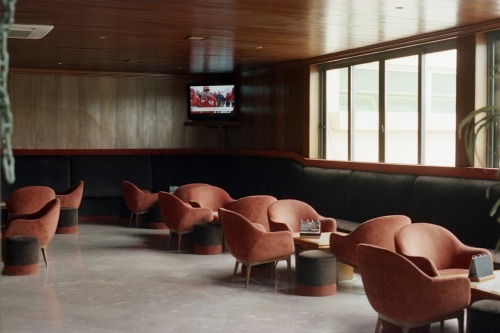
@Szász Lilla: Üdvözlet új otthonomból, részlet a sorozatból (2018-2019)

@Szász Lilla: Üdvözlet új otthonomból, részlet a sorozatból (2018-2019)
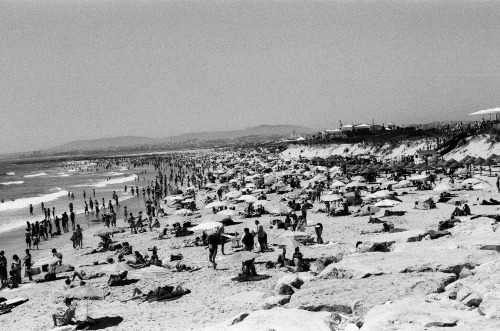
@Szász Lilla: Üdvözlet új otthonomból, részlet a sorozatból (2018-2019)
Greetings from my new home, Budapest Gallery, Budapest
The point of departure for Lilla Szász’s photographic project Greetings From My New Home is the story of the retornados, the nearly 800,000 Portuguese citizens who were resettled from Portuguese colonies in Africa (Angola, Mozambique, Guinea-Bissau, Cape Verde and São Tomé e Príncipe) to Portugal in and around 1975.
As a result of the Portuguese colonial war which began in 1961, the dictatorial Second Republic gradually weakened, and with the military coup of 1974, a rapid process of decolonization began. The accommodation and integration of the retornados, equivalent to nearly a tenth of Portugal’s overall population at the time, was a major challenge for the state and constituted an important chapter in the 20th-century history of the country.
Szász’s photographs capture the personal aspects of this historical event, drawing attention to questions of nostalgia, memory, homelessness, and the plasticity of identity in the lives of those who have left their homes and were able, in varying degrees, to adapt to their new environments. Lilla Szász makes use of a wide array of approaches to portraiture, offering us portraits of people and portraits of places. The points of departure for these private stories were locations which still exist today, homes of varying quality, from former five-star hotels to military barracks. These sites are the physical repositories of their former dwellers’ memories. The postcard quality of the photographs on display at the exhibition – their size and subject matter, which can be understood as a kind of allusion to the frequent portrayal of hotels on contemporary postcards – conjures a sense of travel, of transience, and offers a reminder of the past. Thus, the images of Greetings From My New Home arrive as messages sent half a century ago.
Lilla Szász began work on this project as part of her Budapest Gallery’s Artist Exchange Program residency in Lisbon. She worked closely together on the project with the sociologist Elsa Peralta.
Text by: ZSUZSANNA SZEGEDY- MASZÁK


@ installation photos, credit: Budapest Gallery
No Place Like Home# exhibition at La Junqueira Artist Residency, Lisbon, Portugal
N̶o̶ Place like Home reflects on notions of migration and the feeling of “home” through different media including sculpture, installation, video, performance and photography. More specifically, these artworks explore how tourism, diaspora, forced migration and (de)colonialism influence collective and individual identity in different contexts - either historically and socio-economically.
Artists: Hope Strickland, Lilla Szász, Tulani Hlalo, Rita GT.
Curated by Nuria López de la Oliva
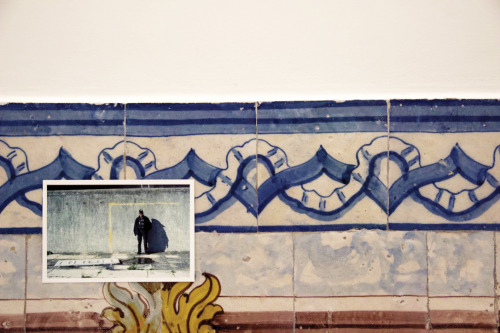

@ Installation photo, credit: nurialopezdelaoliva
Sunday Afternoon# video prepared for the exhibition ‘For Family Reasons’
‘Sunday afternoon’ (2013-2019, video installation, 14:19) shows a typical Sunday afternoon with my grandparents, with its typical moments and scenes. We used to spend many afternoons like this one. And I loved them very much.


@ Lilla Szász: ‘Sunday afternoon’ (2013-2019)